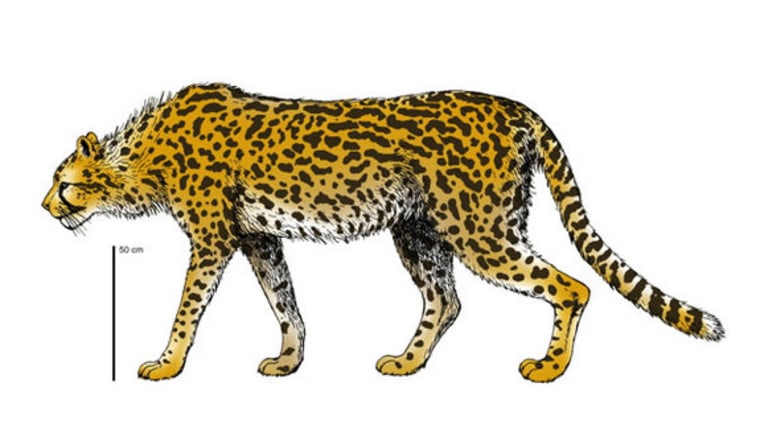Cheetahs might have been the bloodiest killers at one of the oldest known sites for humans, leaving behind more carcasses than any other predator there, scientists find.
That evidence comes from the discovery of the remains of what is now billed as the largest cheetah known, and is now extinct.
The only remaining species of cheetah (Acinonyx jubatus) represents the fastest creatures on land alive, long, sleek cats able to run up to 70 mph. However, fossils suggest other species of cheetah, including burlier varieties, once stalked the planet.
Scientists found the fossils at a 1.8-million-year-old site at Dmanisi in the Republic of Georgia, one of the oldest known sites for ancient human species out of Africa. Researchers had discovered fossils of a dirk-toothed cat (Megantereon cultridens) and a similar scimitar cat (Homotherium crenatidens) in the area before.
Based on its arm and paw bones, the stoutly built cheetah (Acinonyx pardinensis) weighed about 220 pounds, or about double the weight of its modern cousin. (The oldest cheetah fossil known was a skull of Acinonyx kurteni found in China; the animal lived between 2.2 million and 2.5 million years ago.)
The area was once a forested valley floor whose edges blurred into savanna and grasslands, the kind of open ground needed for cheetahs to run down prey, researchers said. In this area, the extinct predator likely preyed on antelope- to horse-size game, probably hunting as a sprinter and suffocating victims by clenching their jaws around the preys' throats.
Given these findings, the researchers said this extinct cheetah likely thrived as a killer, with each cat downing an estimated 16,500 pounds of prey a year, more than any other predator within its community.
"I was really astonished by how much meat it could bring down," said researcher Ralf-Dietrich Kahlke, a paleontologist at the Senckenberg Research Institute in Weimar, Germany.
This bounty of meat would have helped provide others plenty of leftovers, including perhaps humans, who could have either driven the cats away from fresh kills or scavenged the remains after the cheetahs finished dining.
"We don't have any proof of such interactions yet, but we can't exclude them either," Kahlke said.
As to whether cheetahs might have hunted the ancient humans that lived at Dmanisi, "I don't think they really belonged to the spectrum of prey of these cheetahs, but you never know if there were confrontations over kills," Kahlke told LiveScience. All in all, these findings help shed light "on the context of the landscape our ancient relatives interacted with."
Kahlke and colleagues Helmut Hemmera and Abesalom Vekua detailed their findings online July 27 in the journal Quaternary Science Reviews.
Follow LiveScience for the latest in science news and discoveries on Twitter and on .
